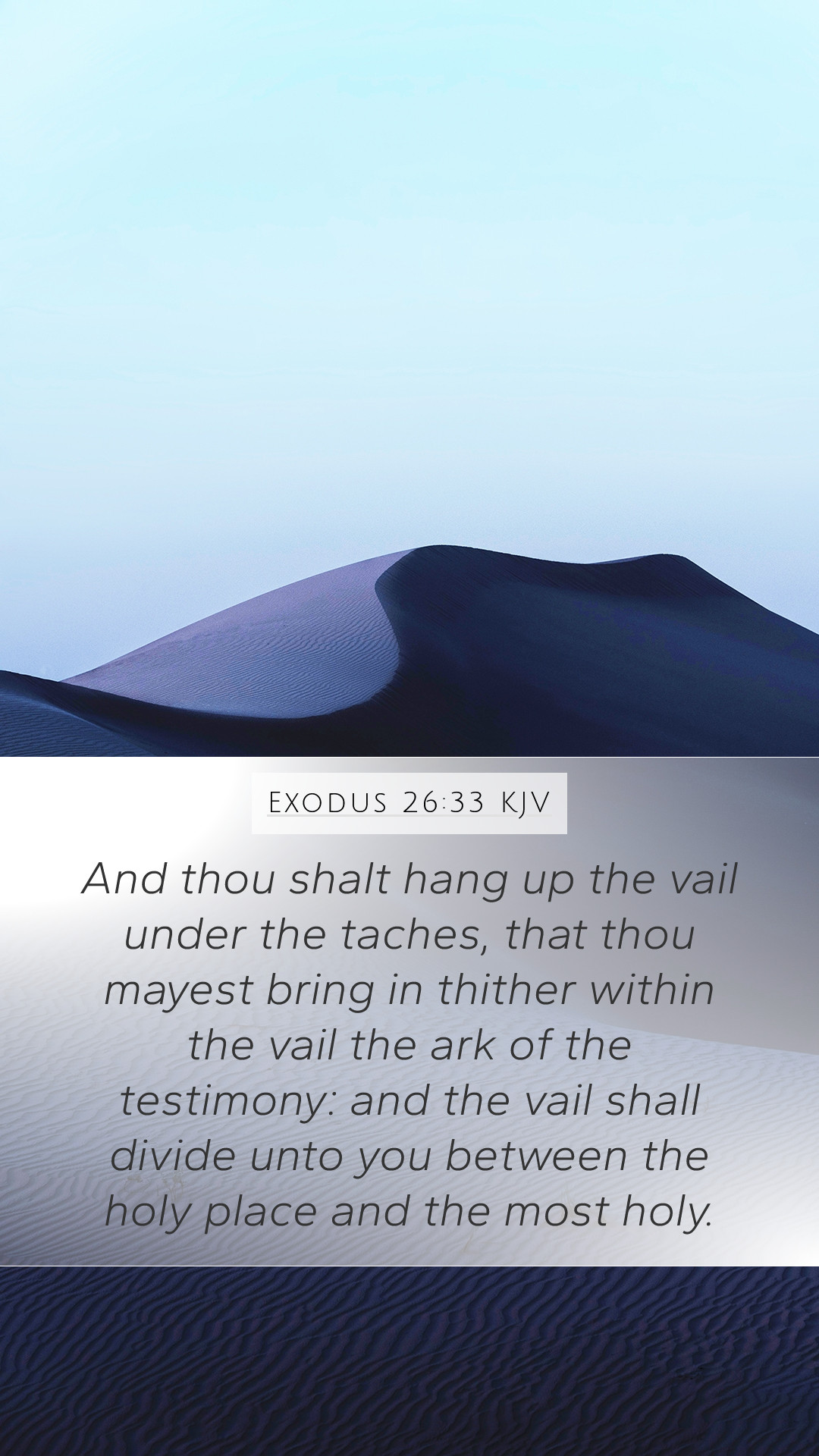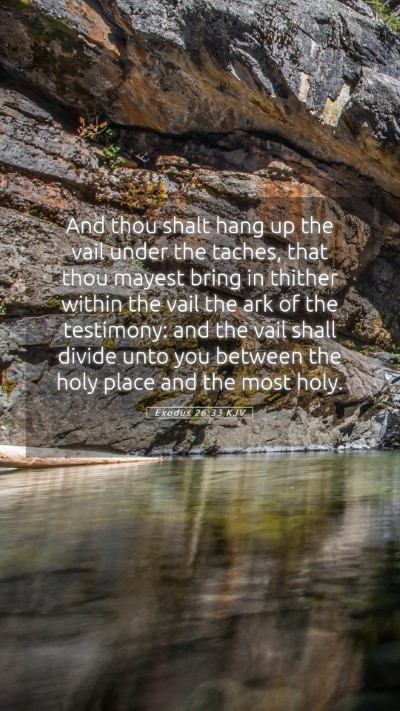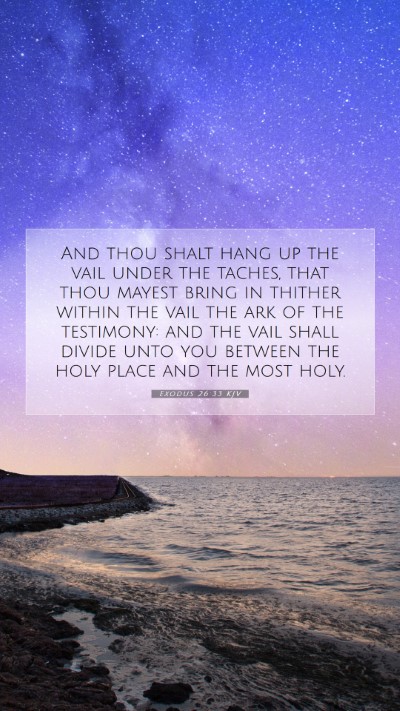Bible Verse Commentary on Exodus 26:33
In this verse, Exodus 26:33, we witness a significant moment in the instructions given to the Israelites for constructing the Tabernacle. This verse states:
"And thou shalt hang up the vail under the taches, that thou mayest bring in therewithin the ark of the testimony: and the vail shall divide unto you between the holy place and the most holy."
The imagery presented in this verse is rich in symbolism and holds deep theological meaning. Let's explore some insights from public domain commentaries such as those by Matthew Henry, Albert Barnes, and Adam Clarke.
Understanding the Rationale Behind the Veil
The veil described in this passage serves several important purposes:
- Separation: The veil acts as a barrier, distinguishing the Holy Place from the Most Holy Place (or the Holy of Holies). This separation emphasizes the holiness of God's presence.
- Access: By bringing the Ark of the Covenant behind the veil, the Israelites acknowledge God’s presence, which is often viewed as both a privilege and a responsibility.
- Symbolism: The inner sanctum housing the Ark represents a place where divine communion occurs, reflecting God’s desire for a relationship with humanity while also highlighting the gap created by sin.
Insights from Public Domain Commentaries
Matthew Henry notes that the veil not only separates the sanctuary but also protects the sanctity of the divine presence from the people. He emphasizes that such boundaries both safeguard the holiness of God and allow for the possibility of reconciliation through proper approach.
Albert Barnes elaborates on the practical aspect of the veil, highlighting its construction and how it signifies the great divide between God and man. The veil was essential in the worship practices of the Israelites, setting the stage for Christ's ultimate sacrifice, which removed such barriers in a spiritual sense.
Adam Clarke focuses on the material and design of the veil, suggesting that its intricate artistry reflects the glory and majesty of God. He parallels this with the New Testament revelation of Jesus, where the tearing of the veil at His crucifixion signifies the removal of barriers between humanity and God.
Theological Significance
The theological significance of this passage cannot be overstated. The veil symbolizes the separation caused by sin, while also foreshadowing the ultimate reconciliation brought through Christ.
Application to Daily Life: Understanding the importance of this veil can foster a sense of reverence and awe in the believer's heart, encouraging deeper reflection on the nature of God’s holiness and the privilege of access afforded by faith.
Cross References
Several additional Bible verses echo the themes found in Exodus 26:33:
- Hebrews 9:3-5: Discusses the symbolism of the Most Holy Place and the limitations of the earthly priesthood.
- Matthew 27:51: Describes the tearing of the veil at Jesus' death, symbolizing open access to God.
- 2 Corinthians 3:14-16: Compares the old covenant with the new and how the veil represents spiritual blindness.
Conclusion
In conclusion, Exodus 26:33 serves as a pivotal verse that illustrates the significance of God's holiness and the access believers have through Christ. As such, it is vital to engage with this scripture through Bible study tools, bible verse interpretations, and scripture analysis so as to deepen one’s understanding of the divine narrative within the Bible.
This verse is integral to discussions regarding bible study topics and is important for those engaged in online Bible study or bible study groups.


